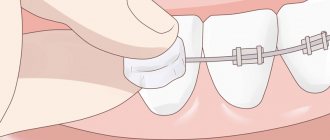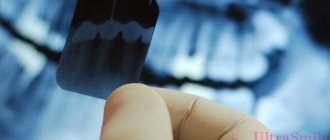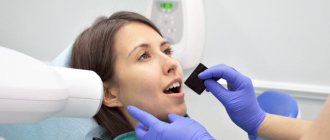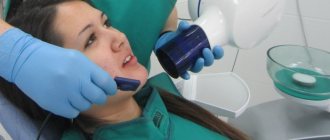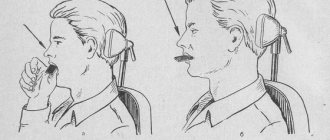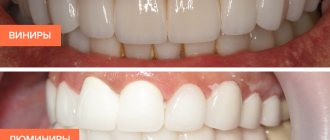Lately I have received several different questions, one way or another relating to the use of x-rays in dentistry. It must be said that there have always been many different misconceptions, myths and conjectures around this topic, mixed with a pronounced phobia in our country towards everything that is somehow associated with “radiation”. Therefore, I decided not to write answers separately to each question, but to combine them into one note.
What is a visiograph and how does it differ from an x-ray?
This one of the frequently asked questions is akin to the difference between a car and a traffic light... It seems that both concepts have some kind of connection, but it is somehow difficult to compare them. It's the same here. A radiovisiograph is a system that receives x-ray radiation, transforms it into digital form and displays the image on a computer screen. Roentgen (who is Wilhelm Conrad) is a long-dead German physicist who gained worldwide fame for his discovery of short-wavelength rays with enormous penetrating power. The physicist himself called these rays X-rays (in English today they are called exactly that - X-ray), but now we often call them X-rays, and in everyday life simply “X-rays”. The unit of radiation power was also called the x-ray. Now it is clear that a visiograph and an x-ray are completely different things. If we compare the visiograph with anything, it is with x-ray film, which it is universally replacing from all areas of medicine.
How often can dental x-rays be taken?
As everyone knows, a large dose of X-ray radiation can harm human health. That is why there are some restrictions on dental x-rays. If we talk about how often an adult’s teeth can be x-rayed without harm to health, then the optimal answer would be: 3-5 times a month (if required). In general, the dose of dental x-rays (as shown by SanPiN) should not exceed 150 mSv per year.
To the question, is it harmful to have dental x-rays for children, the answer is yes. Such diagnostics are prescribed only in extreme cases, when dental pathology requires precise study. It is better to conduct digital research, then the harm will be minimal. It is also important to protect the child’s body with a special vest or apron before taking the photo.
Is it true that a visiograph is safer than a regular film photograph?
When asked about such a comparison, they mean the radiation exposure that the patient receives when using different techniques. In this sense, indeed, a visiograph is preferable, since its sensor is much more sensitive than the best film. Therefore, to obtain a high-quality image using a visiograph, much shorter shutter speeds are needed. To take a picture on film, the shutter speed is 0.5-1.2 seconds. To obtain the same image using a visiograph sensor – 0.05-0.3 sec. Those. 10 times shorter. As a result, the radiation exposure received by the patient when using a visiograph is reduced to an insignificant minimum.
Description of the procedure
There is a certain algorithm that describes how to properly take a dental x-ray:
- the patient must remove metal jewelry;
- then he is brought to the X-ray machine and asked to bite down on the photosensitive film so that the tooth being examined is between the film and the machine;
- a picture is taken.
If required, the picture can be taken in a different projection. In cases where x-rays are performed using a computer radiovisiograph, the patient puts on a special apron, and then a sensor connected to the device is placed on the area of the dental system being examined. The photo is displayed on the computer.
Another option for x-rays is using an orthopantomograph. The subject stands at the device and places his chin on a special support for complete fixation. Next, he bites the block with his teeth, which will prevent the jaws from closing. Pictures are taken while the device rotates around the patient's head.
Usually the procedure takes only a few minutes, after which the finished images are described and transferred to the patient.
Is it possible to do x-rays for pregnant women?
I will not expand on the topic that it would be better to prepare for pregnancy in advance, including “preparing” your own teeth at the dentist in advance. Yes, so as not to run away later with acute pain and be killed by doubts whether this or that manipulation will harm the developing baby... Therefore, let’s leave the lyrics and look at the bare facts and common sense. Without phobias, prejudices, speculations and myths. So, is it possible to do x-rays for pregnant women? Here's what they write to us about this in the documents (SanPiN 2.6.1.1192-03):
7.16. Pregnant women are prescribed for X-ray examination only according to clinical indications. Studies should, if possible, be carried out in the second half of pregnancy, with the exception of cases when the issue of termination of pregnancy or the need for emergency or emergency care must be decided. If pregnancy is suspected, the question of the admissibility and necessity of an x-ray examination is decided based on the assumption that there is a pregnancy...
7.18. X-ray examinations of pregnant women are carried out using all possible means and methods of protection so that the dose received by the fetus does not exceed 1 millisievert for two months of undetected pregnancy. If the fetus receives a dose exceeding 100 mSv, the doctor is obliged to warn the patient about the possible consequences and recommend terminating the pregnancy.”
In general, the conclusion from these two main points is simple and clear. In the first half of pregnancy, it’s definitely not worth taking pictures, but in the second half - 1 mSv for a visiograph - this is practically unlimited.
I would also like to add here that I have often encountered the militant obstinacy of this opinion: an x-ray at the dentist during pregnancy is an absolute evil. It’s better, they say, to screw up a tooth, to cure crooked canals... there are a lot of teeth, pregnancy is more important. Moreover, such sermons are given not only by lay patients who have little understanding of the essence of things, but also often by dentists themselves, who have forgotten their school physics course. To resolve this doubt, we must understand that sources of ionizing radiation are not only found in medical offices. And you don’t have to live next to Chernobyl (and now Fukushima) to receive some doses from the environment around us every day. After all, every second we are affected by both natural sources (sun, water, earth) and man-made ones. And the doses received from them are much greater than those received from an x-ray of a tooth. For clarity, we can give one simple example. As you know from a school physics course, the sun emits electromagnetic energy in a wide range, not only in infrared (heat), visible (light), ultraviolet (tan), but also in x-rays and gamma radiation. Moreover, the higher you are from the surface of the earth, the more rarefied the atmosphere is and, therefore, the weaker the protection from sufficiently strong radiation from the sun. And after all, while “fighting” radiation at the dentist, the same people often calmly fly south to bask in the sun and eat fresh fruit. Moreover, during a 2-3 hour flight “for a healthy” climate, a person receives 20-30 μSv, i.e. the equivalent of approximately 10-15 images on a visiograph. In addition, 1.5-2 hours in front of a cathode ray monitor or TV gives the same dose as 1 picture... How many pregnant women, sitting at home, watching TV series, hanging out on the Internet, think about how many pictures they “took” while watched another program, and then discussed it with friends on the forum and social networks? Almost no one, because the average person does not associate all this with ionizing radiation, unlike an image in a doctor’s office.
And yet, dear expectant mothers, prepare for pregnancy in advance. For many people, visiting the dentist still remains stressful. And it’s not so much that anesthesia or x-rays can be harmful during this period, but what is important is your peace of mind and the absence of unnecessary worries (of which many already have more than enough during this period).
Indications for dental x-rays
A referral for an x-ray is given by a dentist after a visual examination of the oral cavity and a survey of the patient. There are quite a few indications for radiography.
Root crack or fracture
The feeling of severe pain in a certain area of the jaw when biting or chewing food is a sign of a fracture of the tooth root (or a crack in it). Also, during an examination of the oral cavity, a swollen, hyperemic mucosa can be detected near the injured tooth.
On an x-ray, the fracture will appear as a small darkened stripe on the root of the tooth. The image will also allow you to determine which group of fractures a particular case belongs to: transverse, vertical, oblique, comminuted.
Periodontitis
Periodontitis is the pathological process of inflammation of the supporting apparatus of the tooth. In the first stages, this process can be asymptomatic, while gradually destroying the bone tissue around the tooth, and then the tooth itself. Subsequently, the patient experiences bleeding gums, swelling, and slight mobility of teeth.
A pathology such as periodontitis has a very high frequency of manifestations (approximately 90% of the adult population is susceptible to this disease in one form or another). Periodic X-rays for preventive purposes (how often dental X-rays can be taken for children and adults will be discussed below) allows you to see periodontitis in its early stages and begin treatment on time. In the pictures you can see the degree of change in bone tissue, destruction of partitions, inflammatory and purulent processes.
Periodontitis
Periodontitis is an inflammatory process that affects the root membrane of the tooth, as well as the tissues surrounding it. This pathology is most often a consequence of prolonged caries and the lack of any treatment.
Periodontitis on an x-ray is visualized as a layer in the periapical region. With this pathology, fistulas with purulent contents appear. X-rays show foci of destruction with fuzzy, uneven contours.
Anomalies in the location of the dental joint
If teeth grow abnormally, or are positioned in a non-standard manner (with an inclination, with a rotation, etc.), a dentist or orthodontist may prescribe an x-ray to identify an anomaly in the location of the dental joint. It is better if such a diagnosis is carried out in childhood, when the position of the teeth can be changed without much difficulty with the help of braces. It should be noted that children should not have their teeth x-rayed as often as adults.
Neoplasms or abscesses
X-rays are the best way to diagnose tumors, such as dental root cysts. In the image, the cyst appears as a darkened area, which has a round or oblong shape with clearly defined contours.
An abscess is an accumulation of pus in a certain area of the dental system. It is also visible on x-rays.
Problems with X-rays
In some cases, dental X-rays (the attending physician will tell you how often they can be taken if the first image is unsuccessful) cannot be performed properly due to the patient’s body losing contrast. This can happen for several reasons.
A granuloma, abscess or cyst has developed on a separate part of the jaw
Abscesses, cysts, granulomas can greatly obscure the image, making its accurate description and diagnosis impossible.
A radicular cyst has appeared
A radicular cyst can hide other pathological changes in bone and dental tissues.
Improper canal filling
Incorrect use of filling material or filling of canals after removal of nerves leads to exposure of the image. Accordingly, it is not possible to see anything on it.
3-D Dental Scanning
The advent of volumetric imaging (3-D scanning) has changed everything when it comes to the radiation dose in a 3D dental image. As we saw above, the real reason why the dose of X-rays has always been considered very low is that it is projected onto a small X-ray.
But 3D dental scanners use fan beam technology and their detectors are different from the technology used for hospital CT scanners. This provides some dose reduction compared to traditional CT machines, but many of the technical parameters are the same. It is difficult to directly calculate and compare the dose of dental 3-D scanners with traditional X-ray scanning in dental clinics.
It is important to train staff and inform them that low doses will change if a positioning error is detected or unusual anatomy is identified in the patient and unintended body parts are also irradiated during the scan.
It must be remembered that manufacturers of dental 3D scanners may take into account the salivary glands and other anatomical structures that are in the radiation field, but the lenses of the eye or the thyroid gland are usually not exposed to radiation.
The truth is that there's nothing magical about the X-rays used to create stunning 3D images in new dental scanners. Detectors have improved significantly over the years and require less radiation than in the past to reconstruct these 3D images.
Background radiation
The most common way dentists explain the dose from their x-rays to interested patients is by relating it to background radiation. If you just look at the numbers, you can say that one oral X-ray equals only 20 minutes of background radiation. At first glance this may seem correct, but it is not a direct comparison. One concentrated burst of X-ray radiation on a small area of skin in one tenth of a second is not the same as the whole body being bathed in a regular stream of radiation for 20 minutes. Technically it may be the same amount of radiation if it is listed as a dose in the table, but it is applied to the body differently.
Cancer risk
On the Visited Cancer website you can even enter the effective equivalent dose of radiation you receive from a dental examination and it will calculate it will give you the increased risk of cancer as a result of that examination. Because the risk calculation is based on the main biological effect of ionizing radiation.
No one really knows whether one small x-ray from a dental examination can be extrapolated to the whole body dose received by atomic bomb survivors.
Our discounts and promotions
